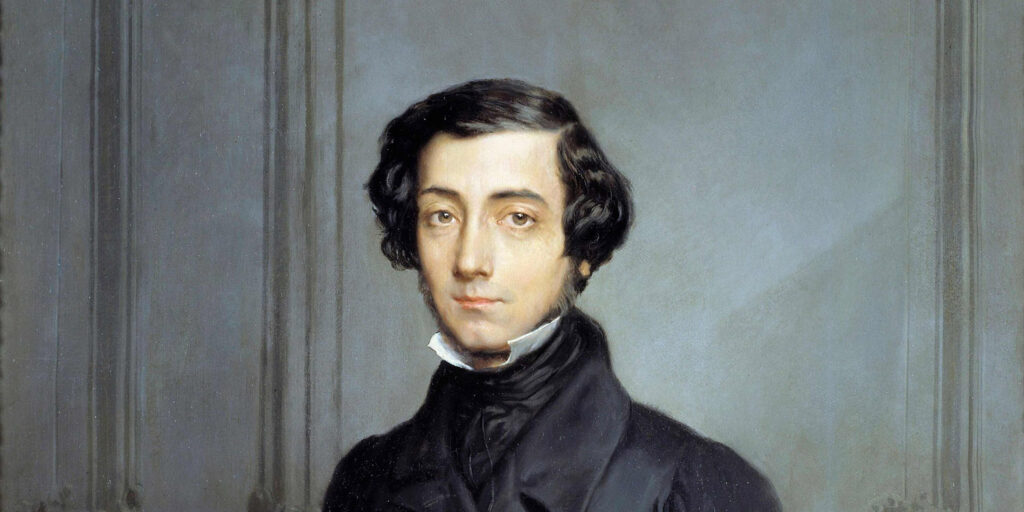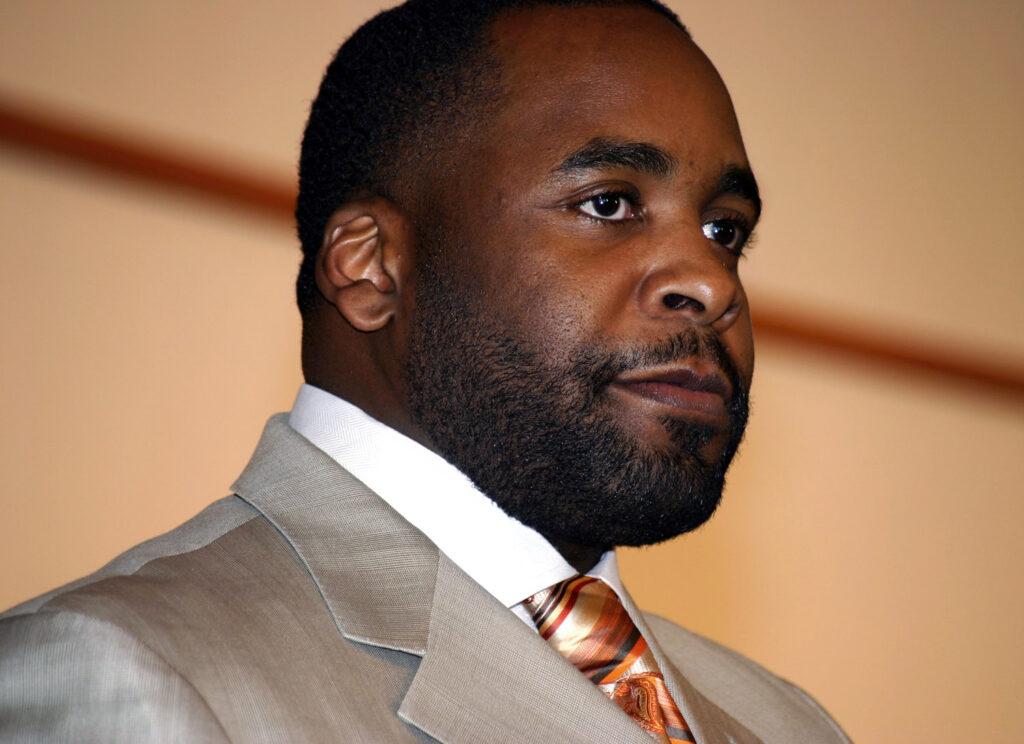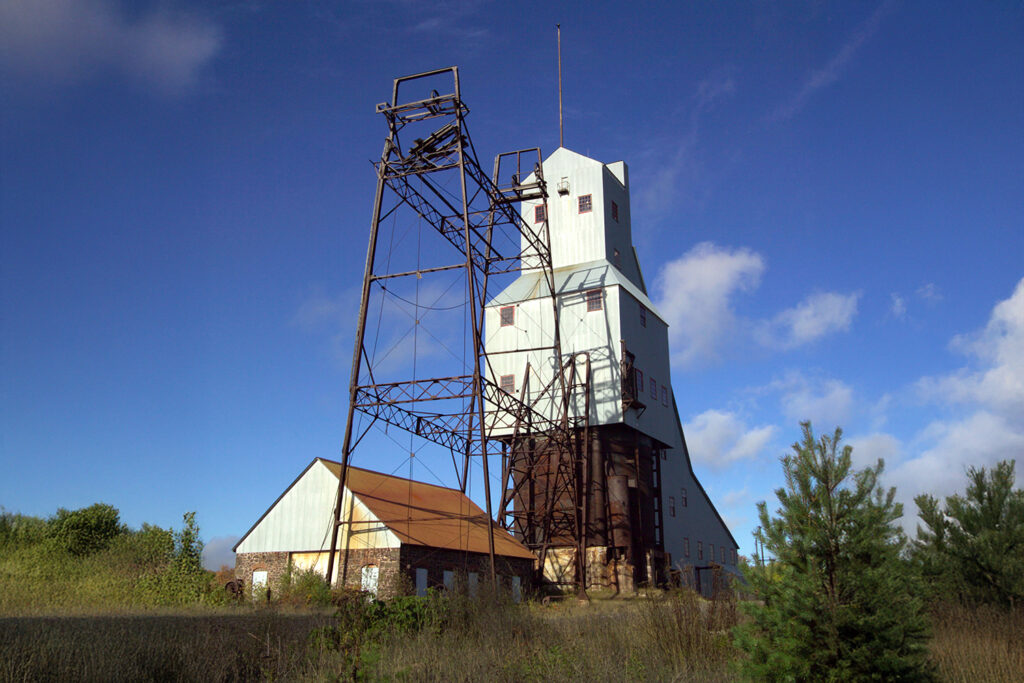Like many Europeans of his time—the early 1800s—the Frenchman Alexis de Tocqueville was fascinated with the new country that had formed on the other side of the Atlantic Ocean.
The wilderness, the natives, the system of government, the idea that they were literally forming a country out of nothing—everything about the United States of America was intriguing to him. As Tocqueville would soon find out, one of the most fascinating places of all was the relatively unspoiled territory they called Michigan.
An aristocratic philosopher, historian, and diplomat, Tocqueville was part of France’s upper crust, and he desperately wanted to see America for himself. So in 1831, when he was in his mid-20s, Tocqueville convinced King Louis Philippe I to send him to the new land to study America’s prisons and penitentiaries, considered the best in the world. This was mostly a ruse; he just wanted to explore.
In any case, in spring 1831, Tocqueville set out across the Atlantic, accompanied by a friend named Gustave de Beaumont. It took them 37 days to cross the ocean, and they arrived in Rhode Island on May 9. They traveled down to New York and spent a few weeks touring some of the prisons there, to fulfill their stated mission, but then Tocqueville wanted to do some exploring.
He knew that the eastern part of the United States was mostly settled and cleared. There were plenty of cities large and small, and most of the Indian tribes in that part of the country had either been removed or were living in relative harmony with the Europeans.
Tocqueville and Beaumont longed to see what they considered the real America—the wild and unsettled part. They wanted to see forests that hadn’t been cleared and natives who were, in their words, savages. The two rich boys from France wanted some adventure.
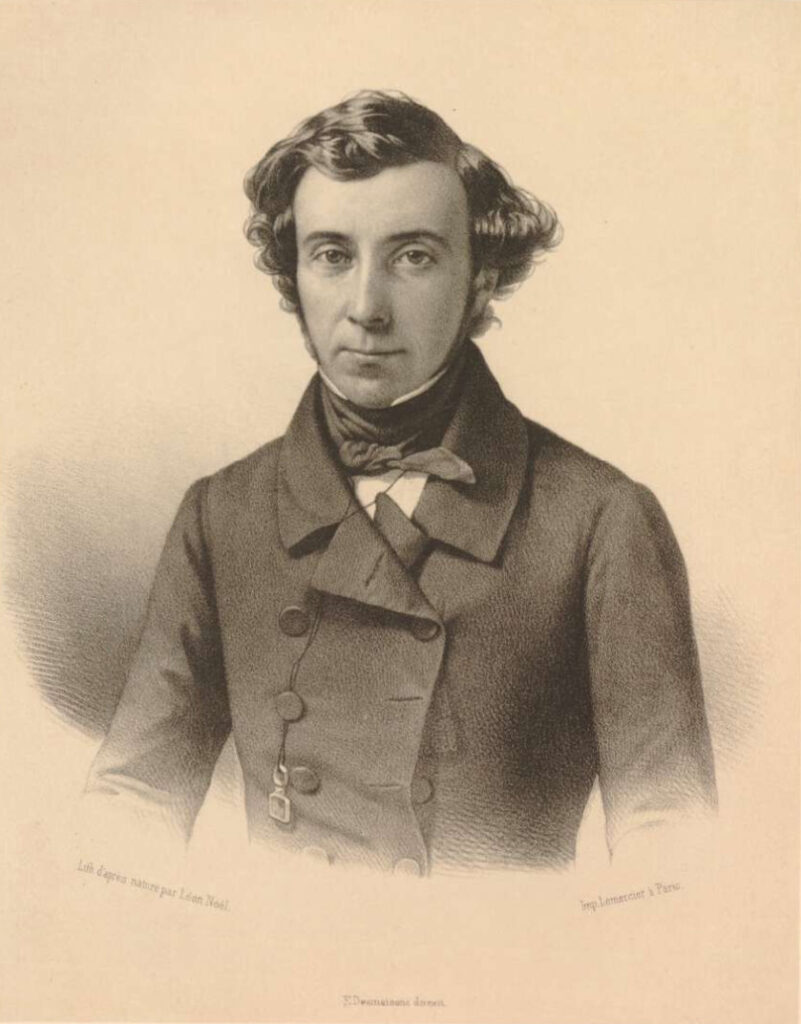
So they started heading west. They started traveling via stagecoach but eventually boarded a steamship in Buffalo. They traveled west along the Lake Erie shoreline, to Erie and Cleveland and finally to Detroit.
Another Frenchman, Antoine de la Mothe Cadillac, had settled Detroit more than 100 years earlier, but Detroit in 1831 was still a small town, with maybe 2,200 residents. When they arrived, Tocqueville and Beaumont knew they were right where they wanted to be: on the edge of wilderness.
They met up with a man named John Biddle, head of the U.S. Land Office, and told him they were looking to travel into the most unspoiled part of the Michigan Territory.
“Major Biddle, as this official called himself, had no trouble grasping what we were after and immediately offered up a wealth of details, to which we listened avidly,” Tocqueville wrote.
Biddle pointed to the northwest, telling Tocqueville and Beaumont to head in that direction. But he warned them to be very, very careful.
“Recently some fine settlements have sprung up as far out as Pontiac and thereabouts, but you mustn’t think of settling any farther out than that,” Biddle said. “The territory is blanketed by virtually impenetrable forest, which runs off interminably to the northwest, and out that way you’ll find nothing but wild animals and Indians.”
The two Frenchmen listened to what he was saying—and totally disregarded it. Not only would they travel to Pontiac, they’d go all the way to the wilds of the Saginaw River.
Tocqueville and Beaumont spent the next nine days on horseback traveling from Detroit to Saginaw and back, starting on July 23 and arriving back on July 31. It would turn out to be the most eventful and memorable nine days of their entire American trip and would form the basis of a wildly popular book Tocqueville would write called “A Fortnight in the Wilderness.”
Tocqueville was positively poetic when he wrote about what they were seeing along the way.
“In this ocean of foliage, who can point the way? Where should one direct one’s eyes? In vain you climb the tallest trees, only to find yourself surrounded by others still taller. To no avail you climb the hills, for the forest climbs with you everywhere, and this same forest stretches from where you stand all the way to the North Pole and the Pacific Ocean,” he wrote.
Because there were no roads leading them to Saginaw, the two explorers needed help. When they reached the Flint River, they met a settler named John Todd, who put them in touch with a couple Chippewa Indians who could serve as their guides. Tocqueville gave Todd two dollars, and Todd turned around and gave the Indians some moccasins as payment for the trip.
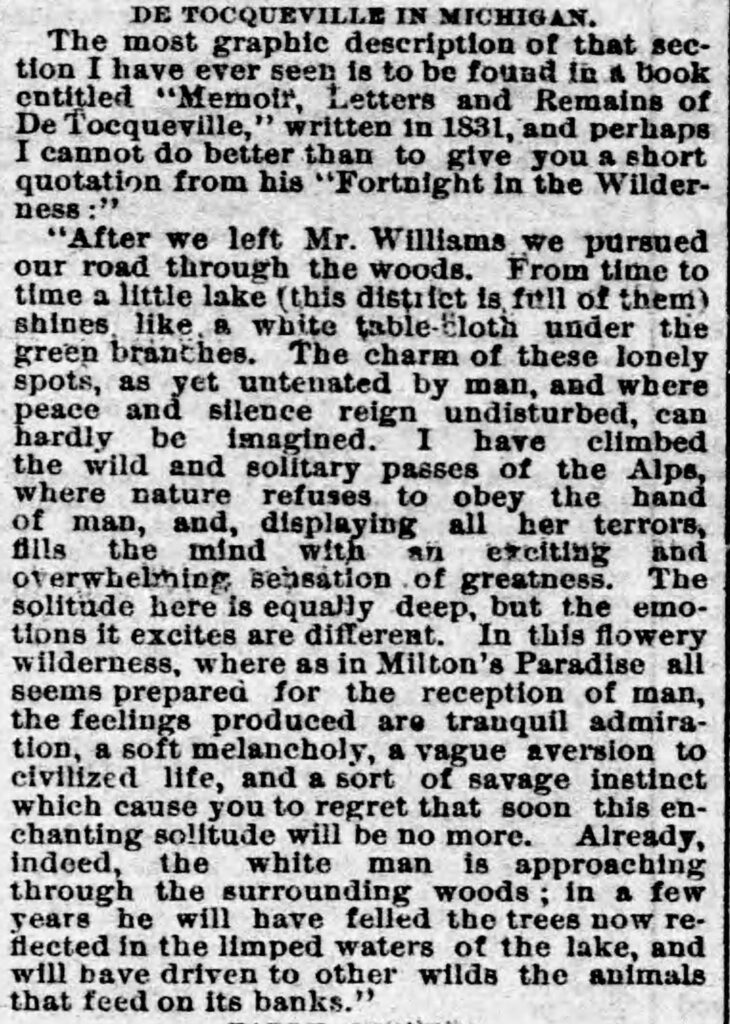
The Frenchmen and the Indians didn’t speak each other’s languages, so they could only communicate via hand signals as they headed north.
“Occasionally our Indians would stop, put a finger across their lips to warn us to be silent, and signal us to get down from our horses,” Tocqueville wrote. “With their guidance, we would then proceed to a spot where at last we were able to see the game they had spotted long before. As they led us by the hand, like children, their smiles seemed almost contemptuous.”
Even with the guides, it was a wickedly difficult journey for Tocqueville and Beaumont, but on July 26, they finally arrived at their destination, the Saginaw River and the tiny settlement of Saginaw. There were two fully built houses and a couple more small shacks under the trees. That was it. There were maybe 30 people living in Saginaw.
It was, in their eyes, truly the edge of civilization. This is what they had come to America to see.
Tocqueville and Beaumont enjoyed a nice lunch, visited the only store in town and followed their guides up the Saginaw River to shoot some ducks. They met one Indian along the way who was fascinated with Tocqueville’s fancy new rifle.
“The wilderness we beheld before us was no doubt just as it appeared six thousand years ago to our earliest ancestors: a delightful, fragrant solitude filled with blossoms, a magnificent abode,” Tocqueville wrote.
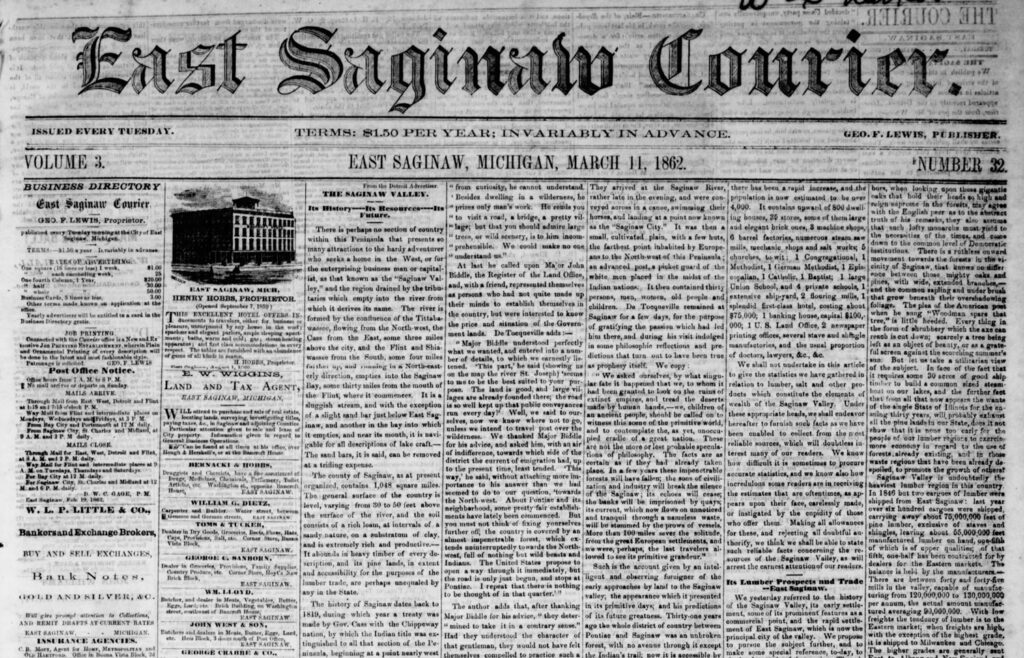
They stayed another day in Saginaw and then found their way back to Detroit. They traveled to many other places in America, including a trip down the Mississippi River to New Orleans. They finally made it back to France in February of 1832.
Tocqueville was a great student of sociology, history, and political science and took copious notes during his visit to America. He turned it all into a book called “Democracy in America,” which is even today considered one of the greatest books ever written on political science.
Tocqueville was a great admirer of American society and government in many ways (and critical in a few others), and the book focused on the concepts of equality, freedom, and justice. Among other things, he greatly admired what he saw as the American spirit and the willingness of the individual to not be limited by his social status.
That sort of thing, he observed, was never happening in Europe.
Through the years, Tocqueville has come to be admired and respected by both conservatives and liberals, depending on how each group chooses to interpret his writings.
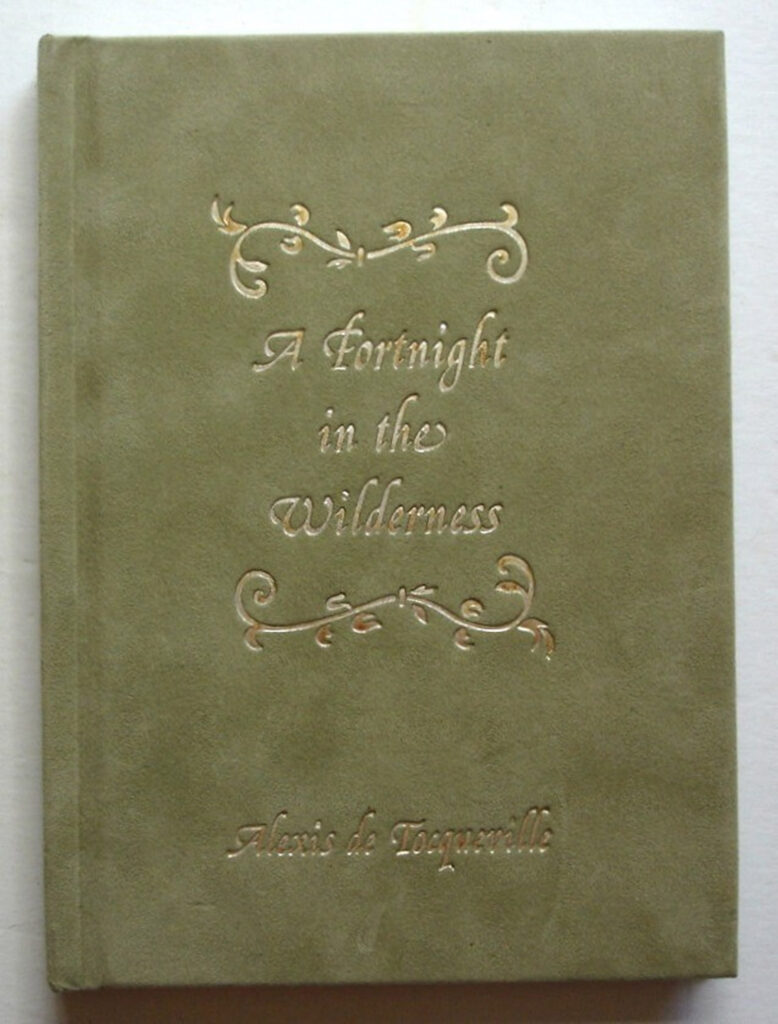
While “Democracy in America” was published in 1835, soon after they got back from their trip, it wasn’t until a year after Tocqueville’s death in 1859 that “A Fortnight in the Wilderness” was published. That’s when audiences learned for the first time about his incredible nine-day adventure in Michigan.
As it turns out, Tocqueville and Beaumont were able to visit right before Michigan truly began to boom. The territory became a state just a few years later in 1837, and all that wild land between Pontiac and Saginaw was cleared soon afterward.
It took Tocqueville and Beaumont four days on horseback to make the trip from Detroit to Saginaw in 1831. These days, it takes maybe 90 minutes traveling up I-75.
Still a pretty trip, but just a bit different now.
Buddy Moorehouse teaches documentary filmmaking at Hillsdale College.
